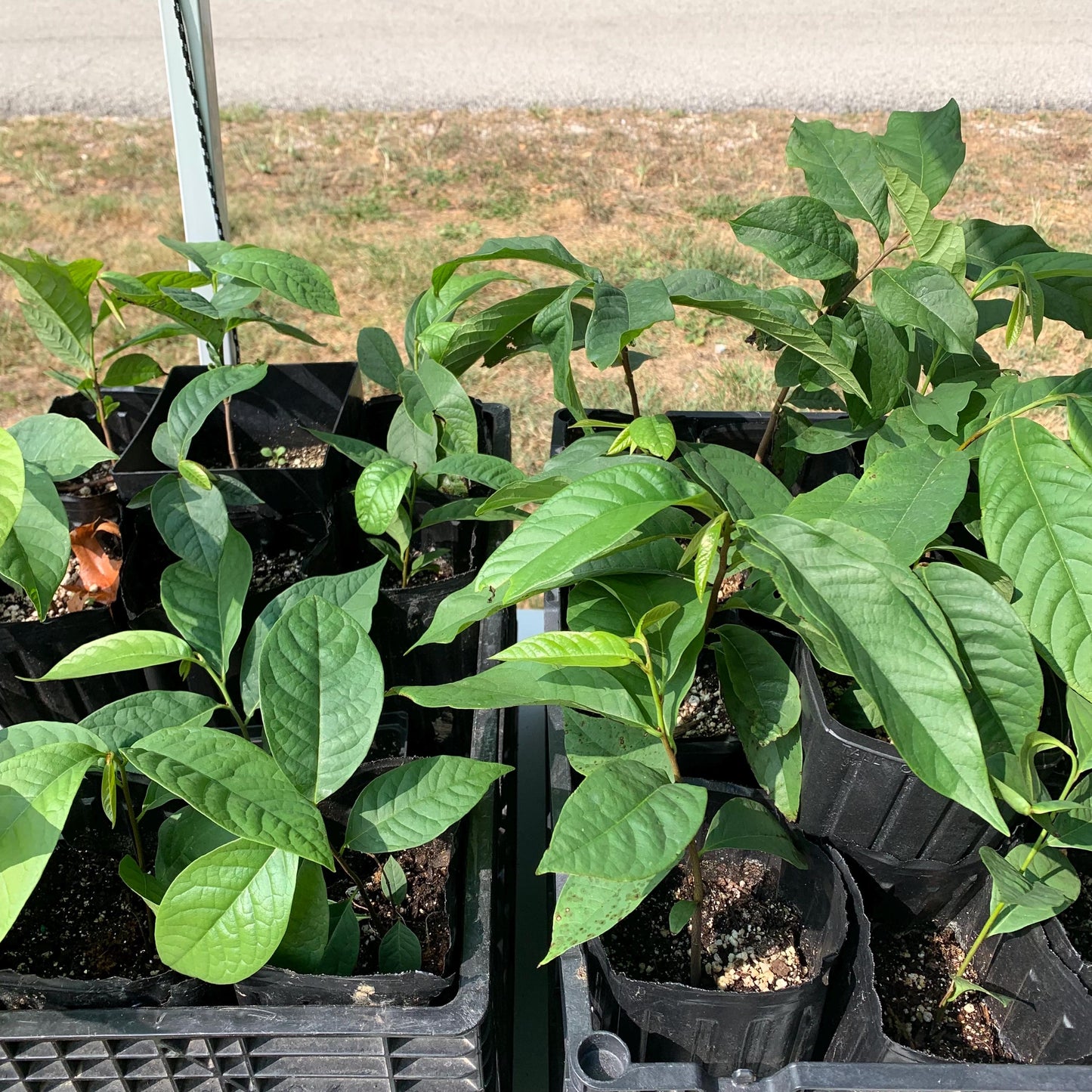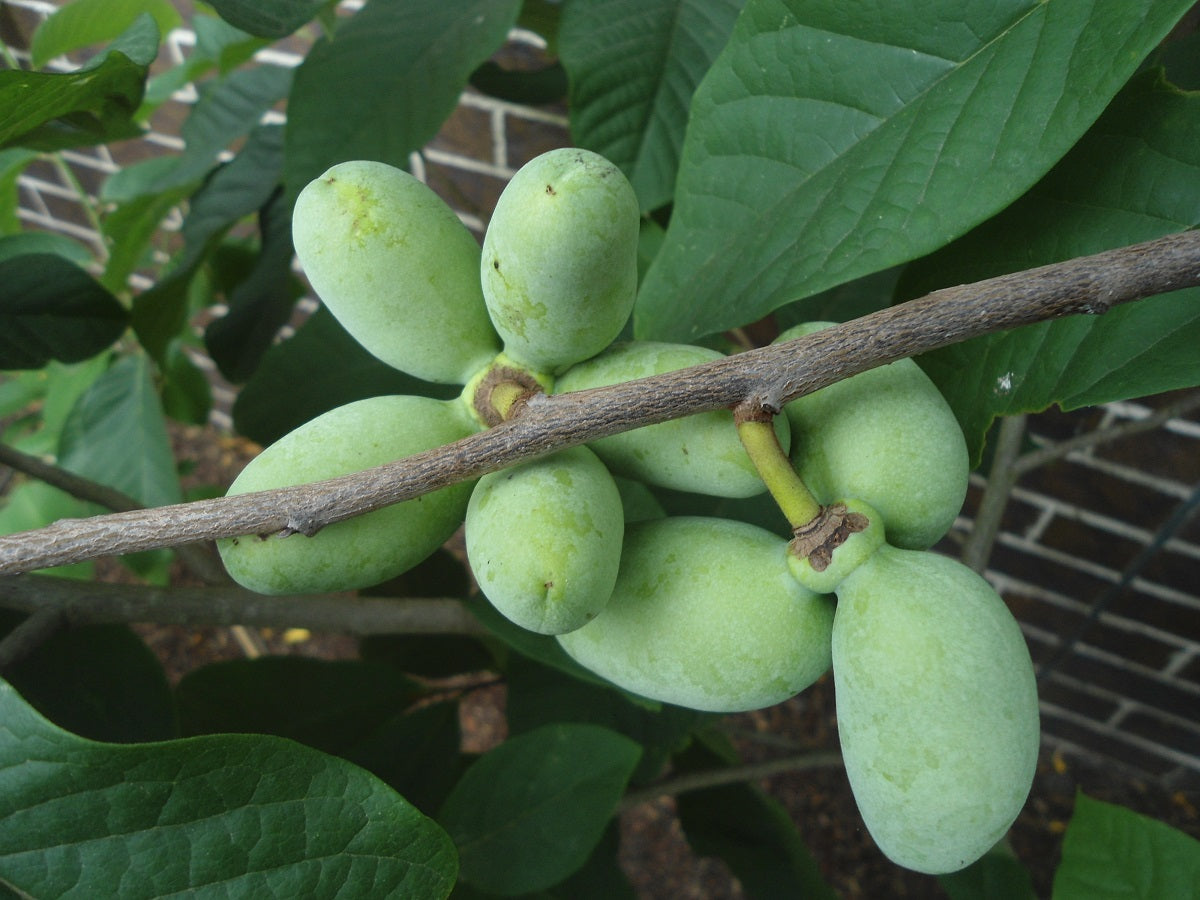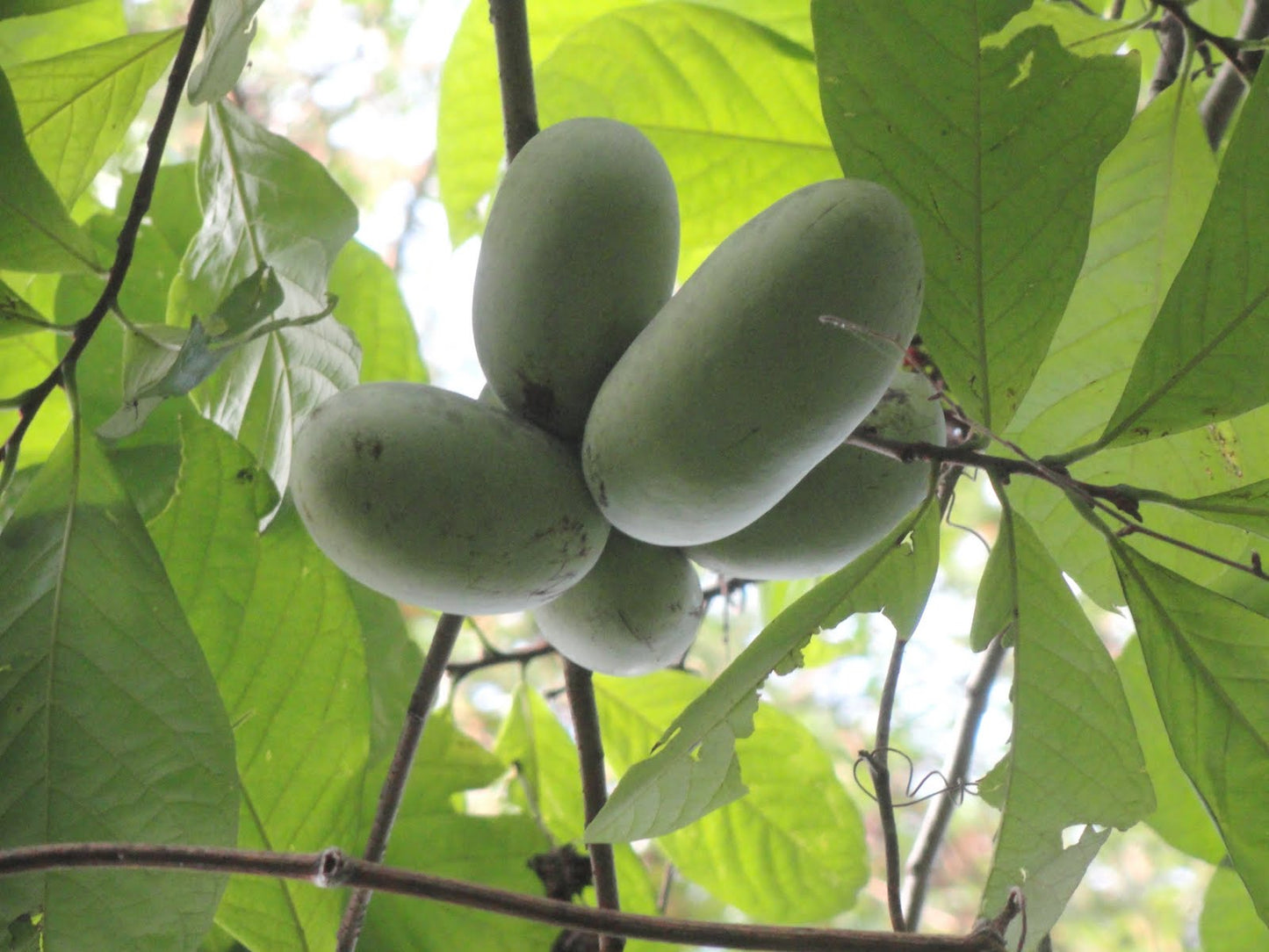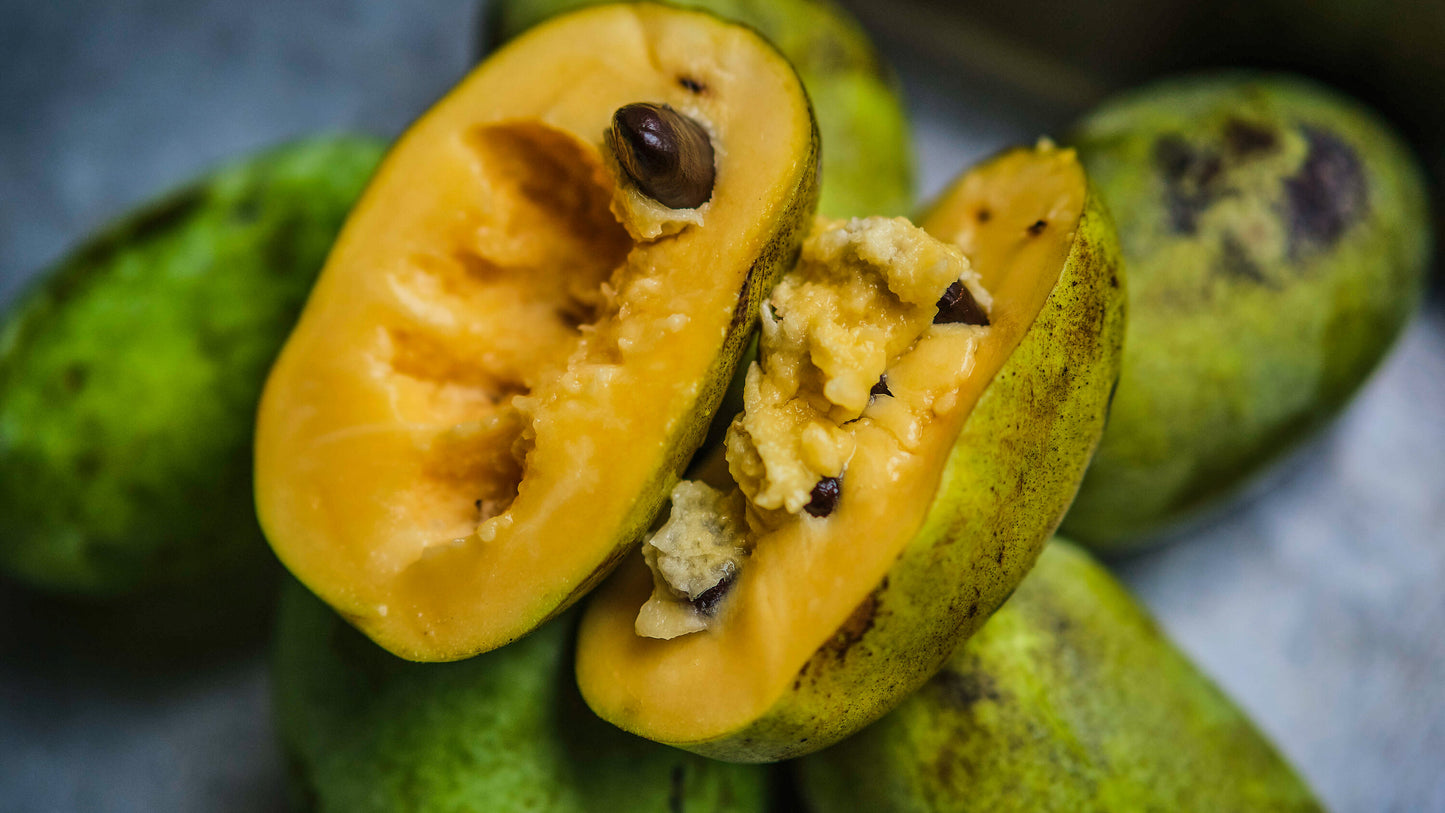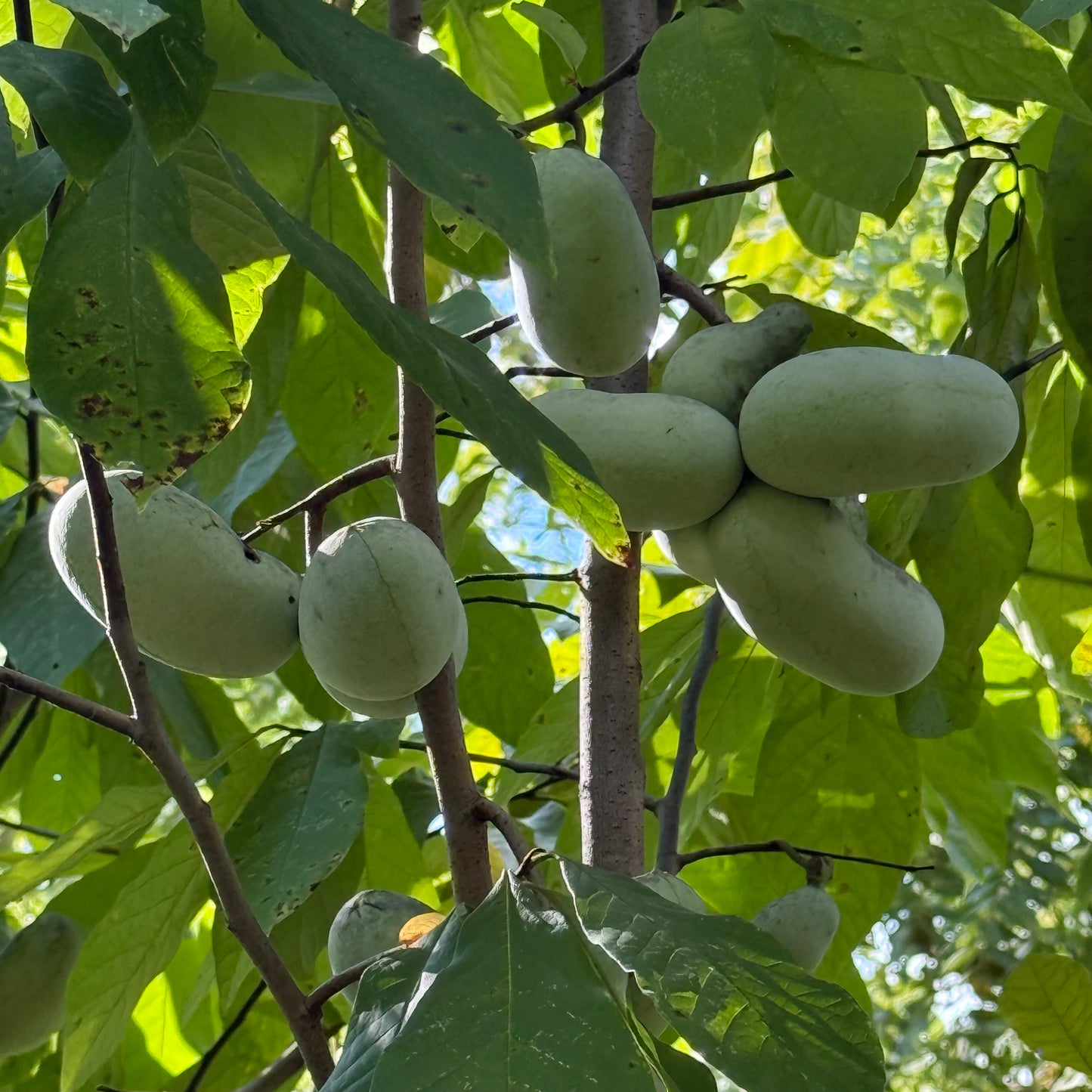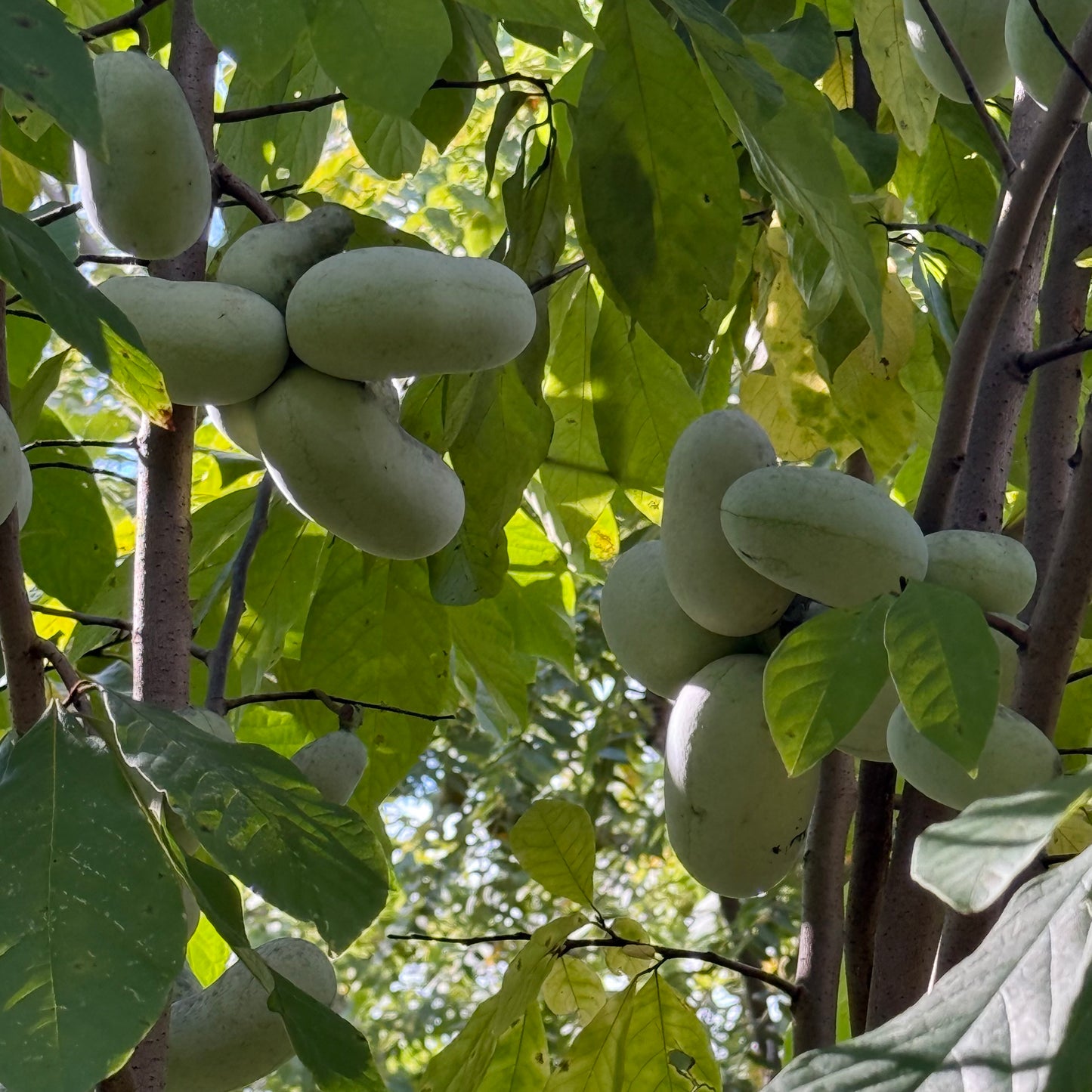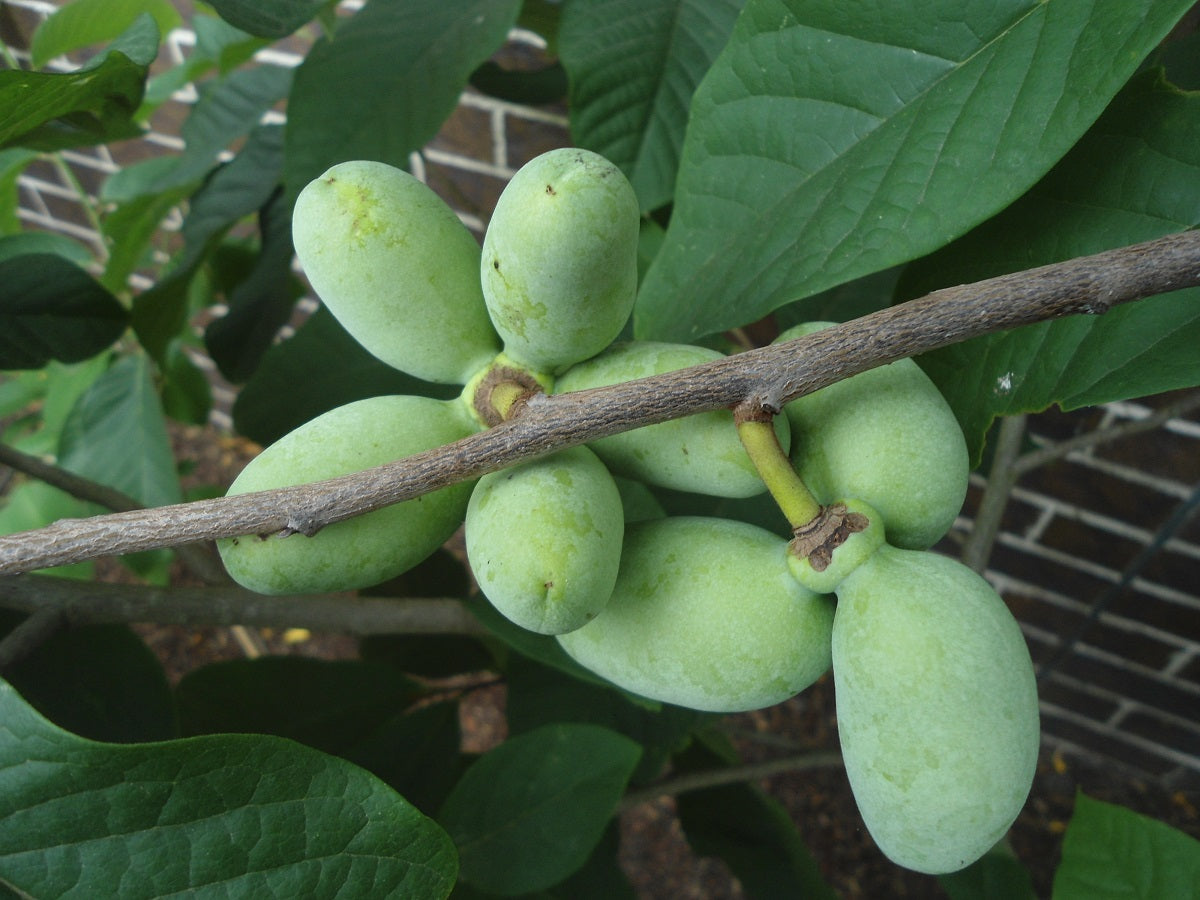1 Paw Paw Tree & Free 24” Tree Greenhouse Tube- only Organic Pesticides Used, in 12” deep-root pot, 1.5 year old size will vary from 6-9”!
1 Paw Paw Tree & Free 24” Tree Greenhouse Tube- only Organic Pesticides Used, in 12” deep-root pot, 1.5 year old size will vary from 6-9”!
Share the love with friends!
No se pudo cargar la disponibilidad de retiro
1 Paw Paw deep rooted tree, grown in a 12” deep-root tree pot. With only organic sprays, no harsh synthetic insecticides or herbicides used.
Beware of bareroot trees, since feeder roots are damaged upon digging; you will usually lose 1 season of height growth, since the new feeder roots are needing to be regrown; we feel potted trees are better!
They were George Washington’s favorite fruit! They are very delicious, but the fruit does not last long in storage or ship well; which is why you don’t typically find at local grocery stores!
1+ Year size, 2 trees are recommended for pollination!
Only organic pesticides used since planting!
Seeds are from know great varieties: Peterson’s (Shenandoah, Susquehanna) others with great fruit quality like Maria Joy!
Mature Size
Recommended Spacing
| Bloom Color | Purple |
| Fruit Color | Green |
| Fruit Size | Medium - Large |
| Ripens/Harvest | September |
| Shade/Sun | Partial Shade - Full Sun |
| Soil Composition | Loamy, Sandy |
| Bloom Color | Purple |
| Fruit Color | Green |
| Fruit Size | Medium - Large |
| Ripens/Harvest | September |
| Shade/Sun | Partial Shade - Full Sun |
| Soil Composition | Loamy, Sandy |
| Soil Moisture | Well Drained - Moist |
| Soil pH Level | 5.5 - 7.0 |
| Texture | Soft |
| Years to Bear | 3 - 5 |
| Zone Range | 4 - 8 |
Description
Pawpaw is a deciduous, native, understory tree in the pawpaw family (Annonaceae). Its common name is probably a modification of the Spanish papaya. It is native to eastern North America, where it grows in deep shade to full sunlight in moist, nutrient-rich forests. It will tolerate occasional wet or moist conditions but prefers good drainage and acidic soil. The species epithet means "three-lobed" and refers to the fruits, which may have one to five lobes, each of which ripens as a separate berry.
In early spring, 6-petaled, purplish-brown flowers mature before the leaves emerge. Flowers have both male and female parts but are self-incompatible. A genetically different pollen donor (a pollinizer) is needed for fruit production. In late summer to early fall, pawpaw produces an edible, sweet, custard-like fruit 2.5 to 6 inches long. Harvesting the fruit can be difficult with competition from hungry wildlife. It is recommended to wear gloves when harvesting as contact dermatitis has been known to occur. The large leaves turn a yellow color in the fall and provide interest.
Pawpaw does well in naturalized, riparian, or woodland areas. It is a flowering tree that attracts butterflies, pollinators, small mammals, and songbirds, which makes pawpaw a good addition to a butterfly, pollinator, or rain garden. Pawpaw is an important food source for Zebra swallowtail (Eurytides marcellus) larvae. Flies and beetles are beneficial pollinators attracted to the fetid odor of flowers. It is an easy-to-grow fruit tree for children's gardens. This plant has a low flammability rating.
Quick ID Hints:
- Leaves produce a distinctive odor when crushed (similar to green bell peppers).
- Leaves large, alternate and distichous; they turn yellow in fall.
- Bark is smooth with wart-like lenticels
Insects, Diseases, and Other Plant Problems: No significant problems. The pawpaw peduncle borer (Talponia plummeriana) is a small moth whose larvae burrow into flower stalks. They can destroy large numbers of flowers. This pest is in NC. The zebra swallowtail butterfly larvae feed on young leaves, but they seldom do permanent damage, nor do they affect fruit yield. Trees can produce root suckers, which can be troublesome in the landscape.
